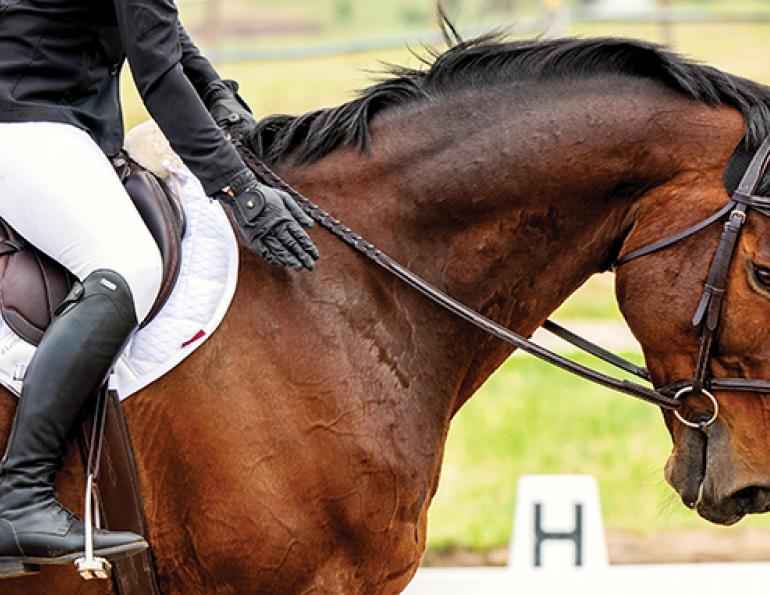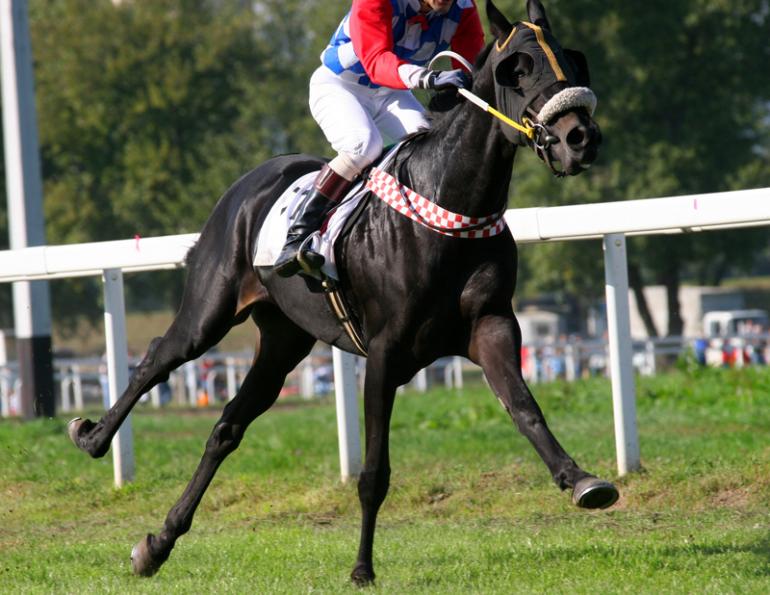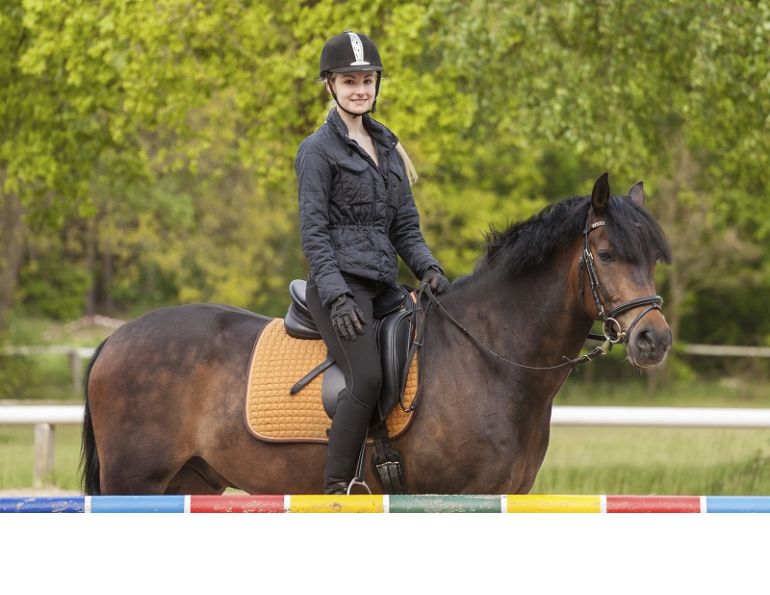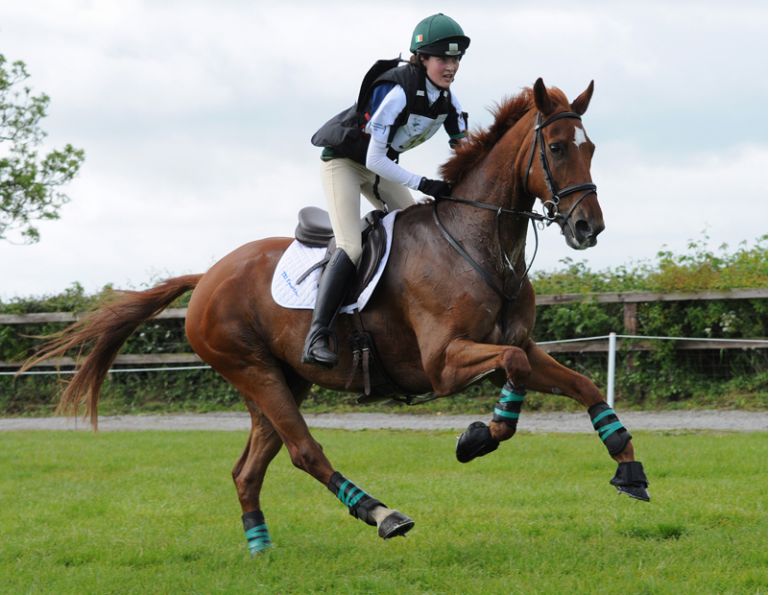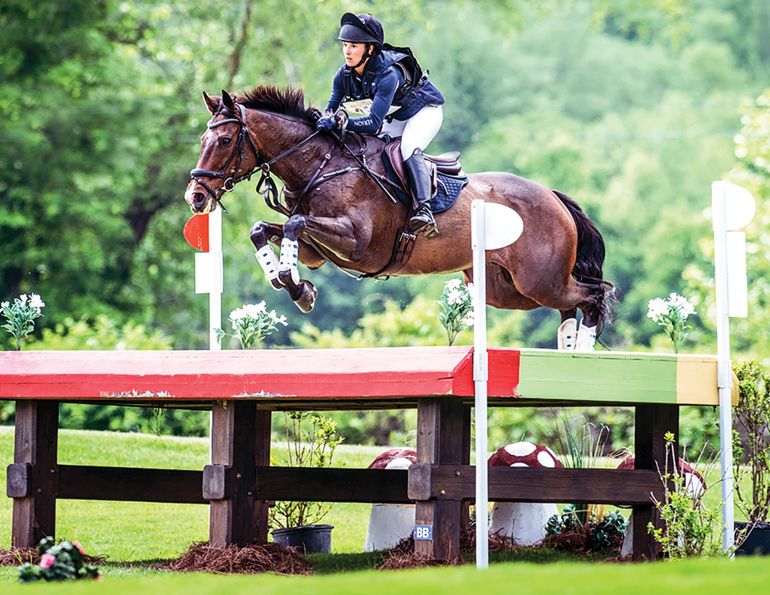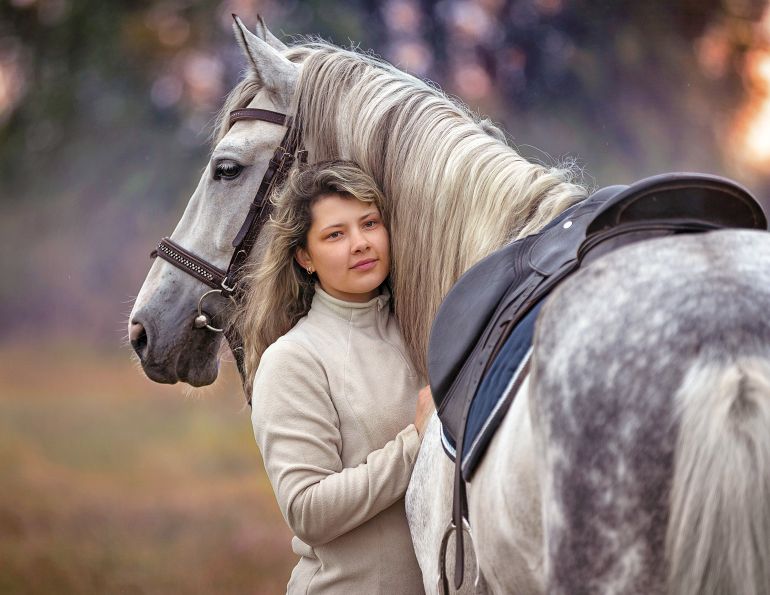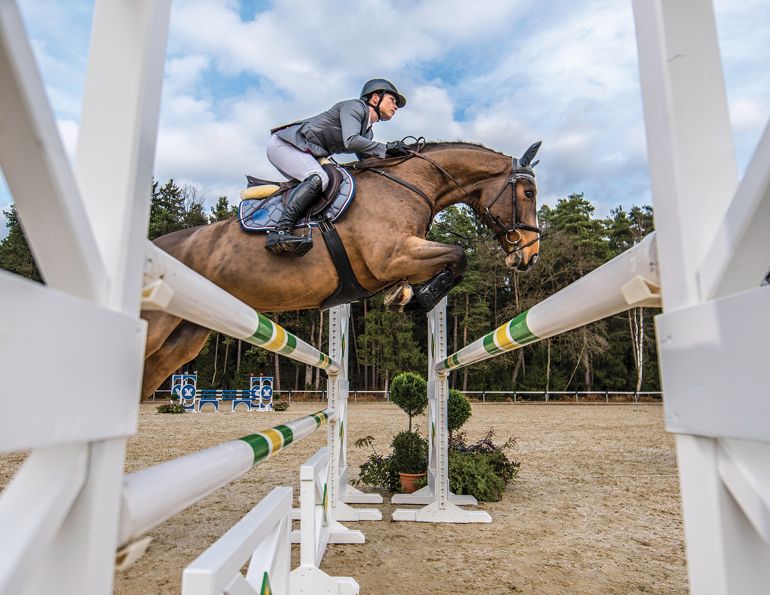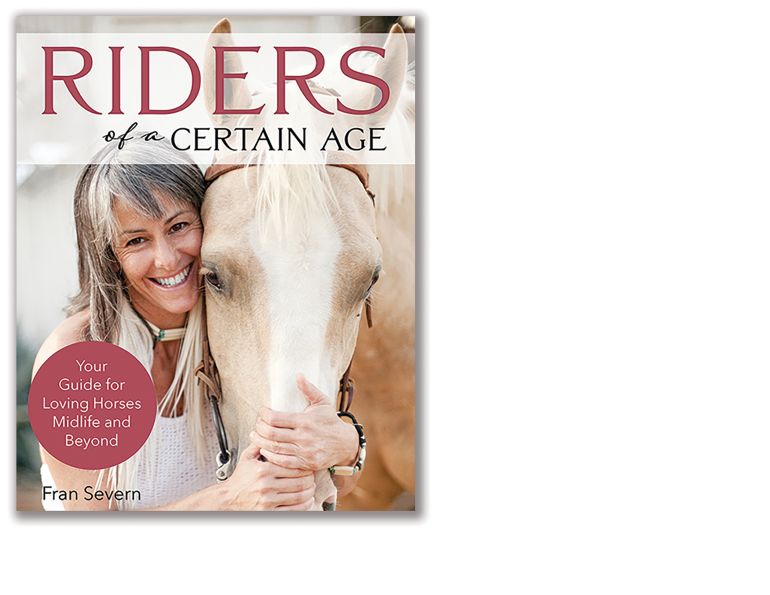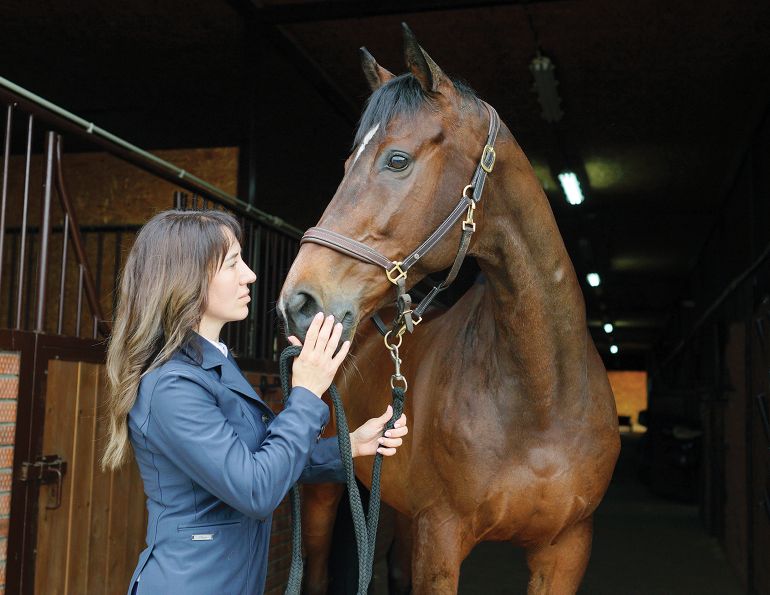How to turn mistakes into learning opportunities
By Lindsay Grice, Equestrian Canada coach and judge
If you plan to step into the competition arena, expect the unexpected. Few sports have more variables than riding — a 1,000-pound partner that doesn’t speak or think like a human; judges with preferences; fluctuating footing and weather conditions; various competition venues; required patterns, courses and tests changing with each show.
When equestrians take their horses off-property, it’s not a matter of if, but rather of when the unexpected and unplanned will happen. So, let’s plan for it.
Anything that can go wrong will go wrong. Murphy’s law certainly applies. What might you expect to go wrong in the show ring? From my perspective as a judge, I’ll share common mistakes, so common in fact that every score sheet has a menu of these mishaps and space to record their numerical deductions. These include minor miscalculations such as a chip before a hunter fence, a slight overspin in reining, or a not-quite-square dressage halt, as well as major blunders such as a refusal, buck, or spook. As a judge, I can only observe, record, and occasionally excuse competitors when things go wrong. Such is judging’s downside. For someone with the heart of a teacher there is little opportunity to explain and to coach.
Why do these things happen? Now I’ll put on my hat as a specialist in horse behaviour (and a generally curious person with an inclination to ask why). Fixing what happened depends on discovering why it happened. Uncover the source and the symptoms begin to fade away. Later in this article I’ll coach you through an action plan — when things go wrong, what do you do? How to manage in the moment while minimizing the incident’s impact to your score, to the other competitors, and to your longer-term training goals.
WHAT CAN GO WRONG IN THE SHOW RING?
Deductions differ across the disciplines, but judges recognize and penalize these common errors.
1. Spook

Nip penalties in the bud by thinking about what might go wrong and how horses experience the competitive environment. Photo: Peter Bruce
Your horse freezes or flees. For its affect to your score, in most disciplines the first option is preferable to the second. For example, a startle and stop will earn a five-point penalty in many Western events. But flight off the track or a spook-and-run-back may take you off pattern and out of the placings.
Why does it happen? As a prey animal, a horse feels vulnerable in unfamiliar territory. A social creature, his instinct tells him there’s safety in numbers. The spook of one horse in a flat class inevitably triggers a flurry of flight! Performing individually while solo in the ring, your horse may feel vulnerable and on high alert for anything moving or changing. Interestingly, I’ve found some horses to be less spooky in the show venue bustle than on home turf. That scary shadow on the ground is now eclipsed by all the sights, sounds, and movement of the horse show.
2. Anticipation
Your horse navigates the trail gate on autopilot, sets up his own feet in showmanship, or jumps into the canter at the click of the announcer’s microphone. He seems to know what comes next, which is manageable until you try to upset the order. Anticipation shows up on the judge’s card in a variety of ways, usually reducing the movement or maneuver score, unless your horse’s “overthinking” culminates in a penalty-earning error.
Why does it happen? A reiner’s tension builds at the centre of the ring because that’s where all the transitions, flying changes, and spins start. An unsettled horse dances at the start cone of a pattern while his nervous rider tries to hold him still, which only makes him feel trapped. In previous classes, upon the judge’s nod, the rider unintentionally stepped on the gas pedal, thus beginning this horse’s anticipation cycle and dread of the start cone as if it were the Bogeyman.
A hunter jigs in the hack class at the sound of the announcer’s microphone clicking to call for the canter. No doubt he’s been startled once or twice by his rider’s hasty outside leg cue, particularly if other horses have begun to canter. Now he’s preparing to take off faster than a teen driver burning rubber out of a high school parking lot.
Horses are creatures of routine, learning quickly by association (classical conditioning) and by trial and error, choices and outcomes (operant conditioning). Horse show routines soon become habits, often unintentionally. Behaviours learned in the presence of fear are not soon forgotten. A prey animal in nature doesn’t get a second chance to make a judgment error.
3. Tension
Short rigid necks, busy mouths, fixed ears, hasty steps. Expressions of tension are more likely to reduce your score without earning an actual penalty.
Why does it happen? Conflict behaviour describes the way horses respond when feeling trapped or confused and without a clear option to find relief. Examples include the horse held in place by a nervous rider or unrelenting training tack, stressed by the abrupt signals of a frustrated rider, or confused by the conflicting aids of a rider overwhelmed with navigating arena traffic while sorting through the announcer’s instructions and the voice of her coach from the sidelines!
4. Refusals and runouts
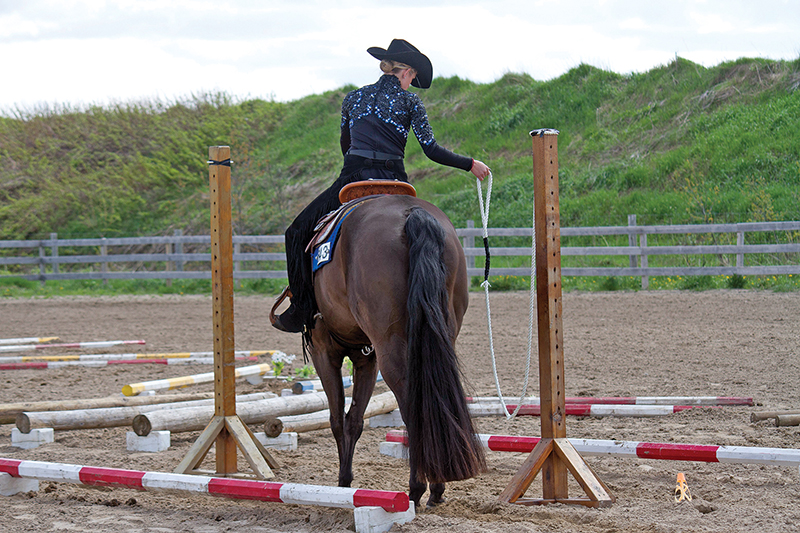
Practice go-forward and move-over cues during every training session so they are confirmed, reliable tools to persuade your horse to go where his instinct tells him not to. Photo: Lisa Black
Your horse veers off the path to evade the jump or avoid the trail bridge. He might balk to a stop or dig in his toes, screeching on the brakes. These major faults ensure you’ll be out of the ribbons. Repeat two or three times (depending on the rules of your riding association) and you’ll be excused from the ring.
Why does it happen? Contrary to what we’d like to believe, a horse doesn’t naturally love to jump. Hurdling over an obstacle into the unseen other side clashes with his strong survival instinct and caution about taking unnecessary risks.
Do you have the tools in place to persuade your horse to go where his instinct tells him not to? As a judge, I wince to see a competitor who hasn’t trained their horse past the “head steering” stage before entering a show. Without confirmed lateral skills and a reliable go-forward signal, they’re unable to override the equine inclination to skip the trail obstacle, or to funnel a wary horse forward and over the fence. Circling after a stop for another approach only confirms an optional side exit. Moreover, the horse’s evasion is unavoidably rewarded as they’re excused from the ring.
5. Break of gait
Even the smallest dribble from canter to trot will earn an automatic low score in hunter, decrease the movement score in dressage, cost a penalty of .5 or 2 in reining or a deduction of 1, 3 or 5 points for most Western events, depending on the number of strides.
Why does it happen? Typically, a horse that breaks gait isn’t light and listening to the aids. In a distracting environment, this education gap is evident. The “go” button is sticky and fails in the crucial stride between canter and trot. The lateral control is weak and unreliable to shift the hips or shoulders back on track. Self-carriage is when the horse stays connected, on track, and in rhythm, whether you shorten or lengthen his stride, without having to hold him there — kind of like cruise control.
6. Gate issues
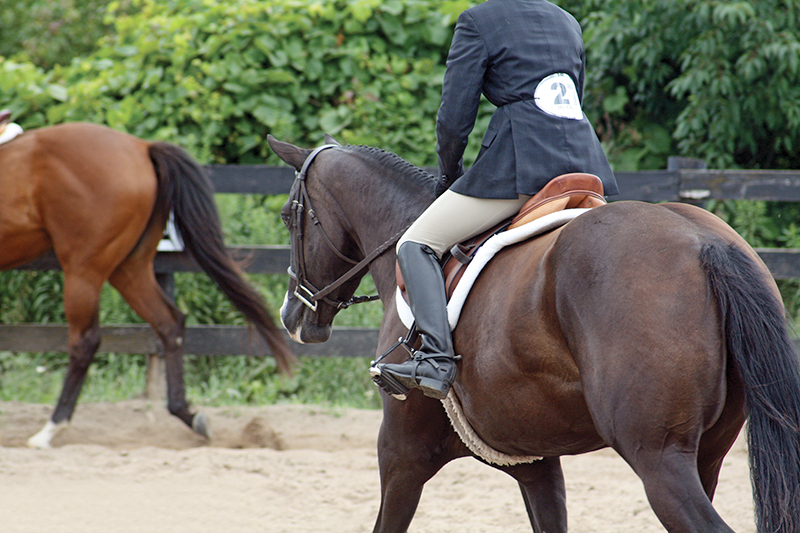
Anticipate trouble spots such as the spooky sections of the ring and the in-gate. Photo courtesy of Teen Ranch
I’ve seen my share of in-gate issues from the judge’s chair, and I’ve tackled my share as a competitor. The arena entrance is the site of scorecards full of penalties: irregular circles, breaks of gait, cross-cantering (losing the hind lead), or even refusing to enter. In a trail or hunter class, bulging off-line on approach to an obstacle disrupts the canter rhythm and flow of the course, resulting in an awkward take-off distance or “chip.”
Why does it happen? A horse’s tendency is to cut in one half of almost every circle and “bulge” out the other half. The rider may steer his head, but the remainder of the horse fishtails towards home. The magnet of the barn and buddies is a powerful draw for the herd-oriented animal. To a horse, there’s safety in numbers.
7. Lead issues
Departing on the wrong lead, skipping to the incorrect lead, or slipping off-track to a disunited lead (cross-cantering) are costly errors. Like breaking gait, many disciplines ascribe a range of numerical penalties, depending on how many strides the horse is out of lead.
Why does it happen? Some eager riders enter the show ring without a thorough knowledge of leads. As your horse’s teacher, you must be able to identify your canter lead by feel — anytime, anywhere. You can feel the lead, not only on the first stride, but as your horse is lifting off into that first stride. Comparing your horse’s body parts to a train, wrong leads result when one car derails — the hip slips off the tracks to the outside or the shoulder bulges to the inside. Penalties occur when the rider is late to recognize the warning signs, or without the lateral aids to prevent evasions.
8. Rider errors
These are the show ring bloopers for which we have no one to blame but ourselves. They include asking for the wrong gait, wrong lead, or forgetting an element altogether. Other disqualifications arise from failure to be familiar with the rules. For example, failing to follow class protocol or sporting unpermitted tack (see The Science of Tack and Training Aids).
Why does it happen? Mental lapses. Failure to deeply memorize the course. Neglecting to plan a step-by-step class strategy. I was the off-course queen as a junior rider. I remember that lost-in-the-jungle feeling of not knowing what jump or turn came next. Vagueness has been my downfall more times than I can count. Too many pre-class instructions from a coach or supporter with the best of intentions can drown out your class plan if not decisive and deeply memorized.
Things will go wrong in the show ring. Considering what might happen and why they happen ensures that we won’t be surprised. When riders consider how horses experience the competitive environment and how they view their world, it helps to nip penalties in the bud.
Related: Podcast - Are Horse Shows Good for You and Your Horse?
EVERY MISTAKE IS A LEARNING OPPORTUNITY
“I've missed more than 9000 shots in my career. I’ve lost almost 300 games. Twenty-six times I’ve been trusted to take the game winning shot and missed. I’ve failed over and over and over again in my life. And that is why I succeed.” — Michael Jordan
We explored common horse show mistakes seen and scored from the judge’s seat, and dug into the source of why mishaps happen. By gleaning insights from the science of how horses learn and think, we uncover explanations beyond excuses (she’s just being a mare) or traditions (seven falls make a rider). I use this evidence vs. emotions-based approach in coaching riders how to consider the horse’s perspective in order to fix the issue. Now, it’s time for an action plan.
How do you manage in the moment to minimize the incident’s impact to your score, to your fellow competitors, and to your confidence? A snag in the show ring need not become a setback, unraveling your training progress. In fact, a snag reveals a weak area, which is an opportunity to build back better.
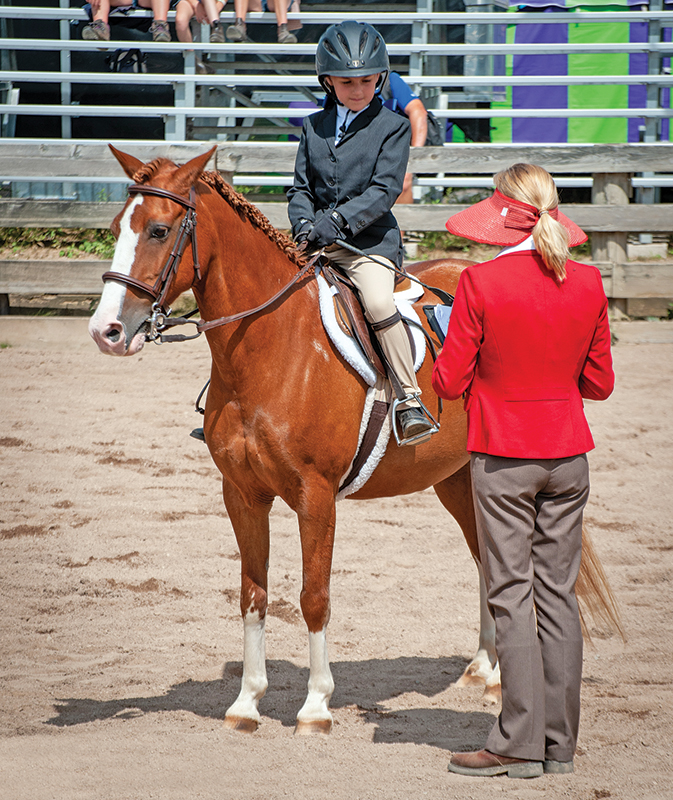
A side benefit of riding through those oops moments is the wisdom gained by experiencing them and living to tell the tale. Photo: Lindsay Grice
Imagine catching your sweater on a stall door latch. You could keep walking, tugging on your arm in frustration as a little snag becomes a lariat loop and you walk right out of your unravelling sweater. Or, you could unhook the snag in the moment, carefully carrying on with dignity despite the disappointing and embarrassing loop, until you can make the repair at home.
I see a lot of frustrated riders at horse shows, “schooling” (jerking) on their horses after they’ve hit a snag in their class. While cooler heads prevail, here is a list of some general don’ts and dos, followed by more specific fixes for typical show ring mistakes.
Don’t go to the show without your tools ready.
But he never does that at home! When your horse responds to a cue “most of the time,” he hasn’t thoroughly learned it. A busy horse show atmosphere is sensory overload for a green horse. It’s like asking a kid to review multiplication tables on the park bench at Wonderland before going on the roller coaster; it’s tough to concentrate and recall!
Don’t blame your horse.
When I assume my horse “should know better” the truth is, at that moment of frustration and embarrassment, I’ve really just run out of creativity, patience, and my understanding of how horses learn and perceive the world.
Don’t blame the judge, your spouse, your mom, or the footing.
All competitors share the same conditions and officials. Control what you can, and do the best with the circumstances you’re dealt. Appreciate your pit crew. They could be on the golf course or in the garden this weekend instead of at a horse show.
Don’t start what you can’t finish.
At home, if you encounter a roadblock or resistance you can try another approach or simpler steps. In the show ring, it may be impossible to follow through on what you’ve asked your horse without disturbing other competitors or disrupting class procedure. Mistakes swept under the carpet will later on show up as anxiety, anticipation, and unwanted habits. Exiting the ring without taking the correct lead, not getting through the trail gate, or not getting over the jump can begin a downward spiral of “untraining” your horse.
“In almost all training situations, the most effective way to ‘delete’ behaviours is to prevent them from being expressed,” — Dr. Andrew Mclean.
Don’t reward evasion.
Sadly, that’s what happens when we circle away from the jump or trail obstacle to take another shot at it. For example, we reward evasion when our horses prance in anticipation of a barrel pattern or the call to canter and we let them go before they settle.
Do anticipate trouble spots.
Where are the magnets, potentially drawing your horse offline or off course? Be prepared for your horse to drift out and cut in somewhere on every circle. Where are the spooky sections of the ring? Which part of the pattern will be challenging for your horse? Perhaps certain transitions are sticky, or he tenses up when another horse comes up behind him. Through a few show seasons I managed a horse that reliably came unglued at applause. In the lineup, I watched for the judges to submit their cards so I could dismount before the placings were announced and divert her attention.
Do blow the class and fix the problem… sometimes.
Sure, there is a time for camouflaging the mistake and showing to win. But for the long-term, invest in the training of your horse even if it costs the class, and do so tactfully and with grace. Be gracious to your horse, because he won’t learn anything when stressed. Be gracious to other exhibitors and don’t compromise their safety or success. And be gracious to the judge who is letting you finish your pattern or jump a courtesy fence after you’ve technically been disqualified.
Related: The Two Faces of Perfectionism in Horse Riding
Do assess the situation.
Tell the story of exactly what went wrong. Put the facts into words:
- My horse kicked at a horse cantering up behind me in the class. I noticed these warning signs — ears tense and turned back. Then, he raised his head and sped up.
- My horse would not stand still at the start marker. The more I held him in place, the more agitated he became. He charged off at the judge’s nod, breaking into a canter instead of the required sitting trot.
- My horse switched leads, loping past the in-gate on the way to the lope-over obstacle. His hind end left the track at the gate and our approach to the obstacle was crooked.
Do prepare a Plan B.
Have it in your tool kit to patch a mistake in the moment (never mind — carry on). Your spare tire is not a permanent tire to drive on, but an imperfect substitute to allow you to finish your trip. A Plan B example might be: Next time, if my horse tenses at the start cone, I’ll walk a calm, little circle instead of forcing him to stand there.
Do detach from frustration.
Emotions can muddle the clarity of our aids or magnify them like a megaphone. A rider’s emotion stirs up her horse’s emotions. Emotions can cloud the logical solution to the issue. When hitting a snag in the warm-up or show ring, take a deep breath and assess the communication gap with your horse.
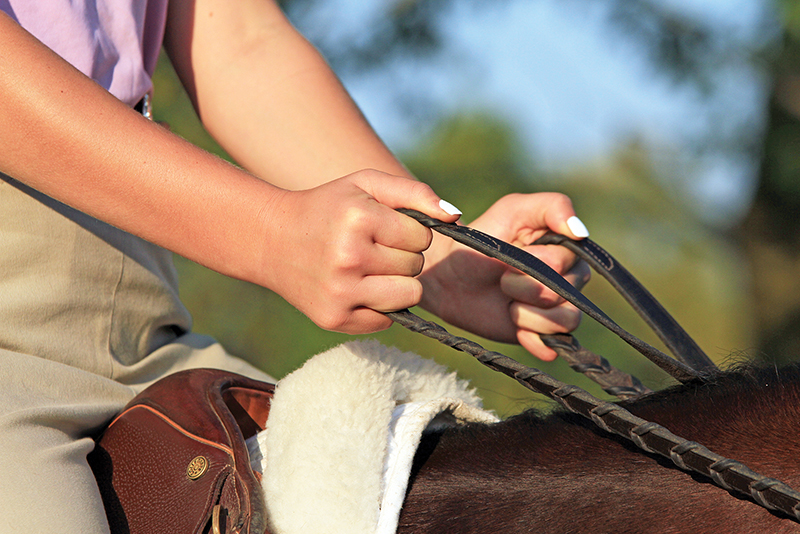
Tension in the rider builds tension in the horse. An unsettled horse that won’t stand still in the lineup or at the start cone feels trapped if held in place by his rider. Photo: Peter Bruce
PRACTICAL FIXES FOR COMMON ERRORS ON THE JUDGE’S SCORECARD
1. Gate issues and gait issues
The gate is a powerful magnet, drawing the horse’s attention out of the ring and towards his barn buddies, derailing him out of lead (hind end drifts off the track toward home) or out of gas (break of gait). Riders can counteract the draw to the gate by doing the opposite of what the horse is inclined to do. Here are some ideas: In the practice ring, leg yield away from the gate with every pass. Accelerate past the gate every time if deceleration is your horse’s default. Don’t stop to rest or dismount at the gate. School in the gate — make it part of your routine by trotting in and out, backing out, and so on. Use your imagination.
2. Refusals and runouts
To convince your horse to go where his instinct tells him not to, you need the proper tools at your disposal. Are your go-forward and move-over cues reliable? Does he yield to leg pressure every time, everywhere? With no tools to guide a wary horse over an obstacle, the rider is inadvertently rewarding the evasion as they’re excused from the ring. Sprinkle lateral movements liberally into every training session — side pass, leg yield, turn-on-the-forehand and turn-on-the-haunches. These are the tools you’ll need to override every hesitancy.
3. Spooking and tension
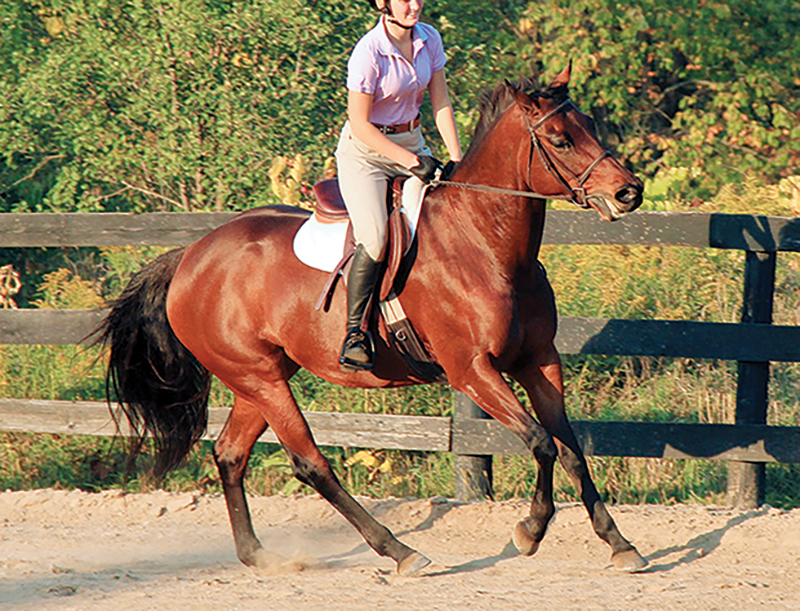
Horses express tension with busy mouths, hasty steps, and rigid necks when they feel trapped or confused with no clear option to find relief. Photo: Peter Bruce
Take a deep breath. Keep all signals to your horse distinct and deliberate. Communicating calmly and clearly gives him a chance to process each cue. Our default when nervous is to clutch the reins and grip with our legs. Conflicting aids create confusion, confusion breeds tension, and tension triggers the horse to escape the stressful situation.
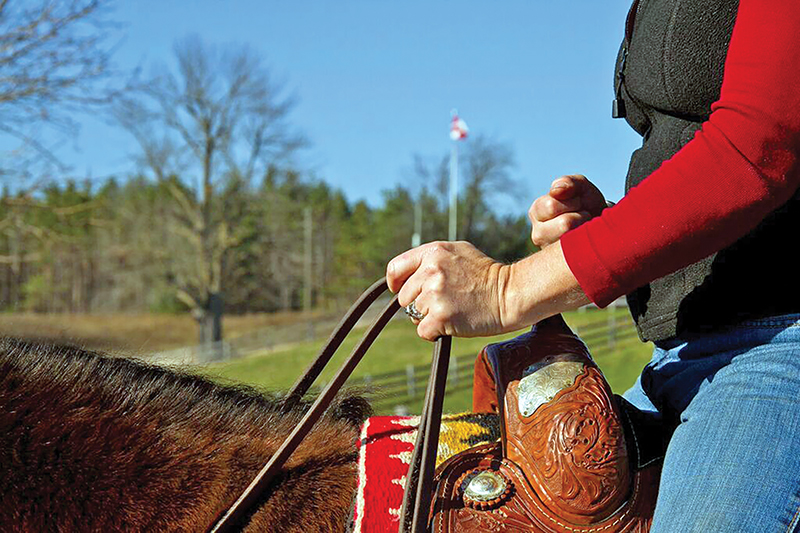
Our default, when nervous, is to clutch the reins and grip with our legs. Conflicting aids create confusion and transmit tension. Photo: Peter Bruce
Avoid abrupt signals. With your horse on high alert, combined with your own survival instinct, you’ll be inclined to overreact, triggering your horse’s flight response. There’s a delicate balance between riding defensively on the lookout for potential danger, and riding with relaxation.
Arrive at the show grounds in plenty of time to acclimatize your horse to the show ring and desensitize him to anything that might capture his attention.
When mishaps happen, aim to recover quickly. Four elements fall apart when your horse shies, stumbles, or slips into another lead or gait: pace, path, package, and position.
Your pace changes and the horse may scoot forward, break gait, or stop. Your path detours and the horse may spook to the safety of the arena centre, counter-bend to gawk at something scary, or lose balance and drop his shoulder. Likely, the package or shape of the horse changes as he elevates his head and spills out of a round frame. And finally, your position changes and you may pitch forward, slip sideways, or get left behind.
As you gain confidence, aim to recover these elements within a few strides of the incident. I’ve salvaged many classes after my horse jumped off the rail by getting back on track while maintaining composure before the judge could turn around to check out the commotion. A side benefit of riding through those oops moments is the wisdom gained by experiencing them and living to tell the tale.
As long as there are horse shows there will be things that go wrong in the show ring. By contrasting our own perceptions with those of our horses, we can opt for a solution with more logic and less emotion. We can carry on in the moment and (eventually) appreciate the learning opportunity!
Related: What Riding Equipment is Allowed in the Show Ring?
Main Photo: Shutterstock/CleverLark



